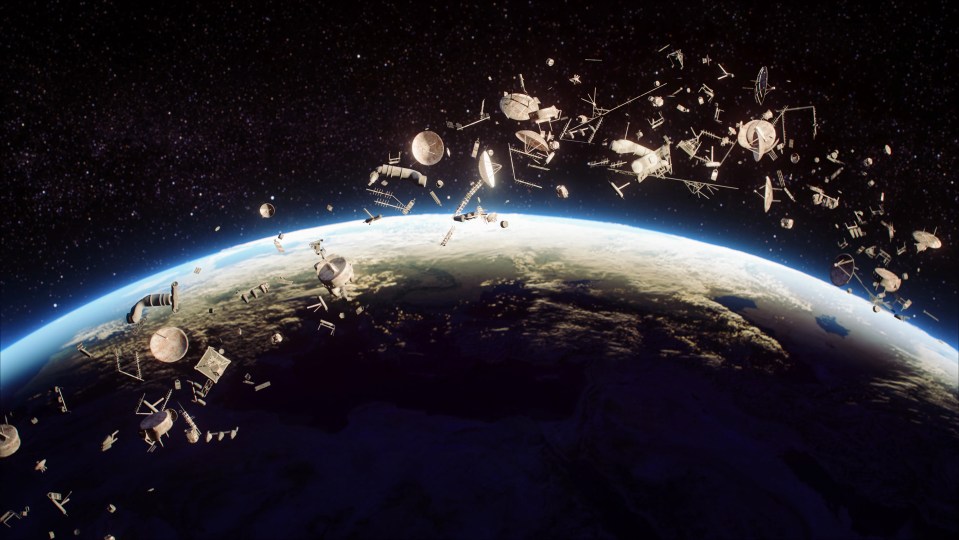DANGEROUS space junk left by a Chinese rocket launch threatens to hit future space crafts at lightning speed, experts have warned.
A Chinese Long March 6A rocket launched the first 18 satellites for the Qianfan broadband network on Tuesday before disaster struck.
While the rocket successfully delivered the satellites to low Earth orbit, its upper stage broke apart causing a cloud of dangerous debris.
These are now racing around our planet at unbelievable speed, the United States Space Command said.
Space debris at this altitude can hauntingly remain in orbit for decades or longer.
If these were to impact with a spacecraft, serious damage could be caused and therefore create further debris in a rapid cycle.
The Chinese debris is thought to be travelling at over an unbelievable 16,777mph.
The US Space Command said: “USSPACECOM can confirm the breakup of a Long March 6A rocket launched on August 6 2024 resulting in over 300 pieces of trackable debris in low Earth orbit.
“[We have] observed no immediate threats and continues to conduct routine conjunction assessments to support the safety and sustainability of the space domain.”
This isn’t the first time China has been accused of “not following the rules” when it comes to space debris.
In February the European Space Agency faced a tense wait for an old satellite to plummet back to Earth.
What remained of its ERS-2 satellite eventually crashed into the Pacific Ocean, an event that’s set to become more common with the increase in satellites being sent to space.
Space debris expert Professor John L. Crassidis spoke with The U.S. Sun about the dangers associated with debris and whether falling space junk is an increasing threat.
Crassidis says that whether space debris will become a common issue for us on Earth will depend on several factors.
“This really depends on a number of factors. Size being the biggest factor,” he told us.
“Most of the stuff that comes down is controlled to deorbit in an uninhabited region in the Pacific Ocean.
“Mostly every low-Earth orbiting satellite and debris burn up in the atmosphere.
“We are not allowed to build satellites out of hard materials, like titanium, because that will not burn up like aluminum.
“As the number of satellites increases, there will certainly be more coming down, but most of it gets burned up in the atmosphere. Some countries don’t follow our rules though.
“For example, some Chinese rocket bodies came back to Earth in an uncontrolled fashion. This can be avoided.”
As Crassidis notes, the remains of a Chinese rocket booster fell back to Earth uncontrolled in late 2022.
This caused a lot of controversy and concern as it was unclear where the debris would fall and what damage it could cause.
“Once again, the People’s Republic of China is taking unnecessary risks with the uncontrolled rocket stage reentry of their Long March 5B rocket stage.
“They did not share specific trajectory information which is needed to predict landing zones and reduce risk,” said Nasa Administrator Bill Nelson said at the time.
“It is critical that all spacefaring nations are responsible and transparent in their space activities and follow established best practices, especially, for the uncontrolled reentry of a large rocket body debris – debris that could very well result in major damage or loss of life,” Nelson warned in a statement.
The chance of a human being hit by a falling piece of space debris is still considered to be under one in 100 billion annually.
Crassidis says we don’t need to worry about the risk increasing for several more decades.
What is space debris?
Space debris is an umbrella term for any bit of junk, disused equipment and otherwise, that is currently stuck in Earth’s orbit.
And it has spiralled into a big problem since the dawn of the space age in the 1950s.
There are nearly 30,000 objects bigger than a softball hurtling a few hundred miles above Earth, ten times faster than a bullet.
It poses huge risks to satellites and the International Space Station (ISS), where crew occasionally have to maneuver out of the way of objects hurtling towards them.
In 2016, a fleck of paint managed to chip a window in the ISS because it was moving at such high speeds in Earth’s orbit.
The problem is, it’s not just a space issue – but Earth’s too.
Objects in space undergo a process called orbital decay, which means they orbit closer to Earth as time goes on.
Debris left in orbits below 600km normally fall back to Earth within several years.
While most space debris burns up on reentry to Earth’s atmosphere – there are some bits that don’t.
This is particularly the case with larger objects, like the EP-9 pallet.
A report by US watchdog, the Federal Aviation Authority, published last year warned that space debris that survived the fiery reentry could kill or injure someone on Earth every two years by 2035.



